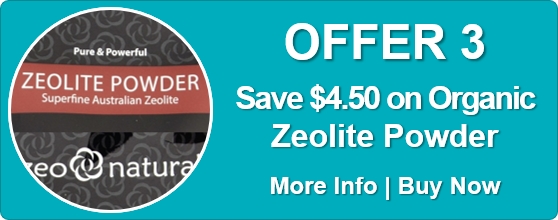Homeopathy Made Simple – How Would You Like Your Remedy? (Part 3)
Homeopathy is fun to use and easy to learn – with just a handful of remedies even a beginner can make a big difference to everyday health problems.
In Part 1 of Homeopathy Made Simple, First Steps to First Aid, I discussed how minor first-aid injuries such as cuts, burns, and sprains are ideal complaints on which to practise when first learning homeopathy as their consistent symptoms make it easy to choose the needed remedy.
In Part 2, Treating ‘Family and Friend’ Ailments, I focussed on how the symptoms of simple acute problems such as colds, headaches and digestive upsets are quite different from one person to the next meaning that a larger range of remedies has to be considered before a prescription can be made. I then explained how to do just that.
In this Part 3 we learn the different ways in which homeopathic remedies are prepared and packaged, and how you should use them.
Different Ways of Taking a Remedy
Homeopathic remedies come in different forms, shapes and sizes. By far-and-away the most common is as sugar pills or liquids but you may also find them sold as powders, creams, and sprays.
While a remedy will work in any form there are some advantages and disadvantages to each type so let’s look at what to consider and how to use them.
Sugar Pills
Because of their sweetness, sugar pills1 are the most delicious way to use homeopathy. They are smaller in size than a dried pea and their base is normally made from either sucrose or lactose. 2, 3
One pill at a time4 is dissolved in the mouth as a dose and because the remedy itself has no taste, the pill tastes exactly like a little ball of sugar5. Big people and little people love them.
If pills are being used for babies, young children or those who cannot swallow, the risk of choking can be avoided by tucking the pill into ‘nature’s pocket’ just between the gum and cheek. Once there it will be out of harm’s way and will quickly dissolve.
1. Pills are also called pilules or globules
2. If lactose intolerance is a problem, check with the manufacturer that your pills have been prepared with sucrose.
3. Very occasionally, some manufacturers may include a starch with the sucrose or lactose. If this is of concern please check the ingredients of your pill with the manufacturer.
4. Homeopathic remedies are non-toxic so manufacturers (and some books) may recommend using more than one pill at a time but this is totally unnecessary. In fact, one pill can be converted into a multi-dose liquid bottle to extend its life further – with advantages over a single pill. A link to more information and instructions on how to do this is included under Liquids.
5. In spite of their sugar content, diabetics can safely use pills without causing a spike in their blood sugar levels as the amount in each pill is so small.
Granules and Powders
Granules or Powders consist of medicated poppy-seed size lactose or sucrose, or ground lactose or sucrose. The powders, normally wrapped in folded paper, may be a little messy during dosing but otherwise both have the same benefits and considerations as sugar pills.
Tablets
Tablets are usually compounded with other substances to increase their size and so taste chalky and less sweet than sugar pills or powders. Occasionally they may be made only on sucrose or lactose, in which case the same considerations for pills apply.
There is no advantage in taking a tablet over a pill; tablets have been produced to meet consumer demand for a larger, familiar shape. Tablets are normally chewed or swallowed. If they only consist of sucrose or lactose they may be dissolved in the mouth.
Tablets are unsuitable for infants or those who have difficulty in swallowing, and again, those with lactose intolerance may wish to source tablets prepared with sucrose.
Liquid Remedies
Liquids are normally dispensed as drop doses via a dropper-top cap of a bottle. Liquid remedies do have a few advantages over sugar pills and tablets.
First, by succussing (agitating) them before each dose, their potency can be altered slightly to minimise the risk of aggravation should the remedy be taken too frequently.
Second, the drops are easily diluted further to suit those who are highly sensitive and react strongly to homeopathic remedies.
And third, a single-dose pill can be converted to a multi-dose bottle, extending its life and increasing its cost-effectiveness.6
If the liquid remedy is prepared with water, the drops taste of nothing more than water. If a small amount of alcohol (or sometimes brandy)7 has been added as a preservative, a very mild but still pleasant taste of alcohol will be present.
While other components don’t increase the effectiveness of the remedy, manufacturers may add things such as flavours, vitamins and minerals, or preservatives. It is always wise to check the list of ingredients on the side of the bottle.
Parents may choose to give a drop dose of a liquid remedy to young babies rather than a sugar pill.
6. Instructions on how to convert a pill into a liquid remedy are available at: Instructions for Turning Pills into Liquid Remedies.
7. Recovering alcoholics may prefer to have their remedy prepared in water without alcohol – something a practitioner can do. These water-only remedies should then be refrigerated between uses, something that is not necessary if alcohol has been added.
Sprays
Sprays in pump packs are manufactured to meet consumer demand for a different and possibly more convenient way of taking remedies. They have same benefits and considerations as liquids.
Sprays are usually sprayed into the mouth but do check you have not inadvertently bought a spray meant for the skin. The remedy in the spray will not cause any problems but added emollients and fragrances could.
Creams, Ointments and Lotions
Like sprays, creams, ointments and lotions have been produced to meet consumer demand but this time for a remedy that spreads directly onto the skin.
In using them it is important to realise that any remedy, whether dissolved in the mouth or applied topically, produces a whole-body effect – not one confined to just the skin. For this reason, topical remedies are not an absolute necessity; a bruise is treated just as readily by a sugar pill in the mouth as a cream applied directly to a bruise.
Do check the list of ingredients on the labels as manufacturers will add other components such as fragrances, emollients and preservatives.
Olfaction Doses
Olfaction doses are “sniff” doses of a remedy – the remedy is inhaled rather than taken orally or applied to the skin.
Doses of both pills and liquids can be given by olfaction. This approach provides extremely gentle doses for those who are overly sensitive to homeopathic remedies, or for those who cannot take remedies in any other form.
In spite of their gentleness they still work equally well with those of normal sensitivity. More information on olfaction doses can be read at: I Sniff at Homeopathy.
The Strange, the Bizarre, and the Unnecessary
Suppositories and and injectables are now available – but most homeopaths ask, “Why?”
Since remedies produce whole-body effects when given as sugar pills, drop doses, rubbed onto the skin, or inhaled, there is no logical need for them to also be given rectally, by injection – or even by acupuncture. It would appear that these forms of delivery have been prepared to suit the medically inclined.
Practitioners using these approaches are best avoided as they are unnecessarily invasive. Fortunately, injectables and suppositories are still not available in most countries.
How Often to Take a Remedy
The frequency with which a remedy is given depends on the intensity of the complaint – the more intense the symptoms, the more frequent the dose.
The golden rule of homeopathy is that once symptoms start to improve, stop taking the remedy. Only re-dose if improvement slows or symptoms start to return.
This approach avoids too-frequent doses of the remedy that may cause an aggravation – a temporary intensification of symptoms. While aggravations are usually mild and not harmful, they are also unnecessary and show that too much of the remedy has been taken.
The following link provides a guide on how often to dose for the intensity of your first-aid or acute problems. Its instructions are suitable for any remedy preparation – pills, liquids, creams, and even olfaction doses: How Often Should I Take a Dose of My Remedy.
Keep Practising
By now, you should be using your remedies on the various first-aid and acute complaints that come your way. As you do your understanding of homeopathy will grow and with practice you’ll become much quicker at choosing which remedy to use.
Remember, if you don’t get the remedy right the first time, no harm is done. Just check your books again for a better matching remedy and if you can see one, use it. When the remedy is correct, improvement will follow and you’ll have a much clearer understanding of what the symptoms look like for that remedy.
In the next article I will simplify homeopathy further with information on different things that may happen once a remedy is given, and what they mean for follow-on treatment.
Fran Sheffield
Homeopathic Consultant and Educator








